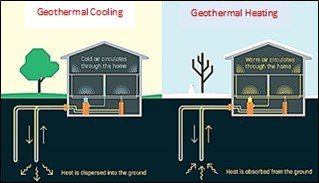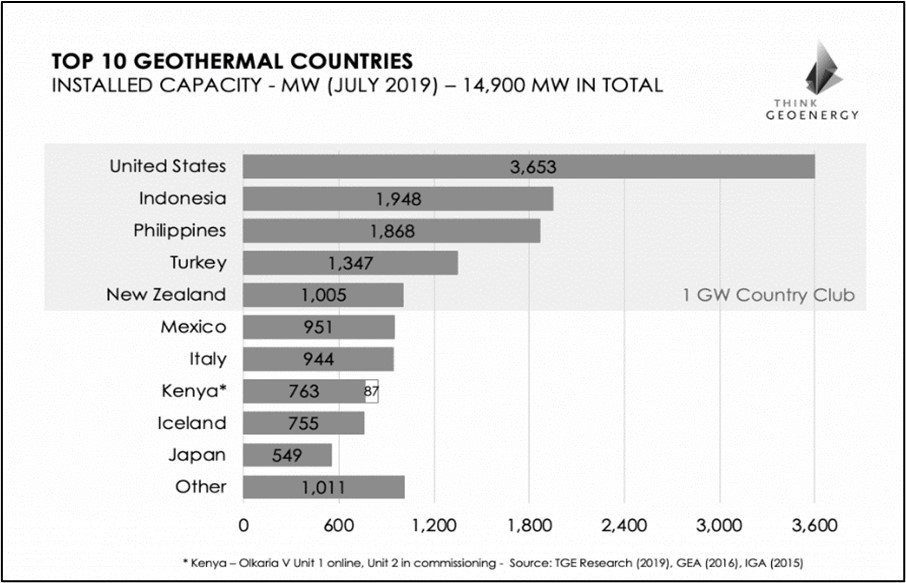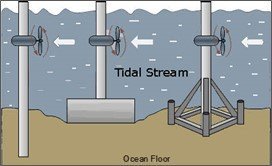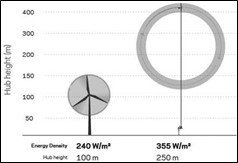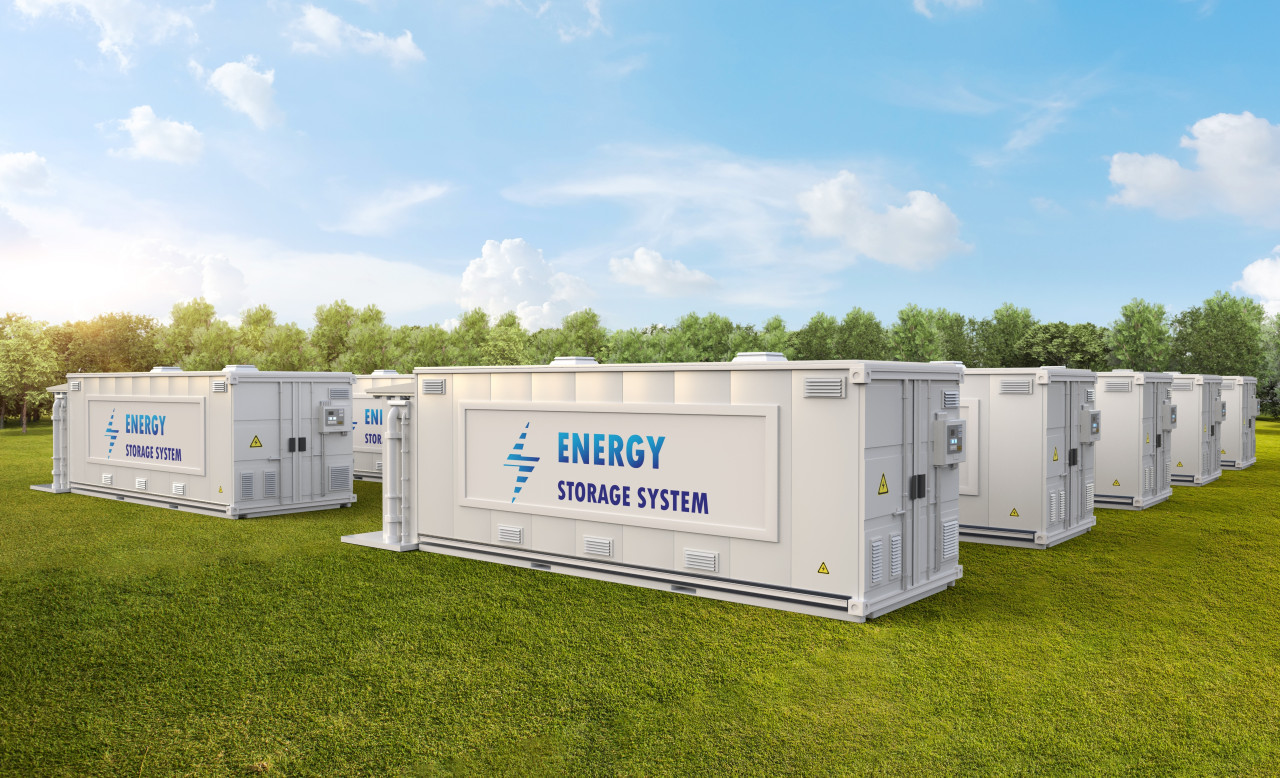Upcoming renewable energy sources
The emerging future could be a combination of improved wind, solar, thermal heat pumps, as also entirely new innovative technologies. Some of these emerging technologies are quite interesting and imaginative. We can expect new exciting technologies in near future forming a part of renewable energies writes R. P. Deshpande, B.Tech. Hon. (Elec.), IIT(Bom); F.I.E.
The world is poised for huge changeover to renewable energy sources in the coming decades, and solar and wind systems are making a good combination in the overall scenario. However, considering the limitations of current energy storage systems, these may not be sufficient to match the load demands. Scientists and researchers are working on some new innovative technologies of energy generation, which may contribute towards the goal of pollution-free energy. The emerging future could be a combination of improved wind, solar, thermal heat pumps, as also entirely new innovative technologies. Some of these emerging technologies are quite interesting and imaginative.
1. Geothermal energy
Man has used geothermal energy from hot springs and geysers for over 10,000 years in history for cooking, heating, or bath, and even today these are in use at some places. The most commonly known source of geothermal energy is hot water springs jetting out of the earth's surface, which are the easiest to use. Sources of geothermal energy could also be from shallow hot molten rocks a few kilometers underground. The main advantage of geothermal energy is that unlike solar and wind it is a continuous source of energy available round the clock. Further, its availability is 90 percent or higher, compared with about 75 percent for coal-based plants.
Heat pumps can circulate water at shallow depths, under 6 meters, through pipelines for heating a house or building. At these levels under the earth, temperatures nearly are stable all the time. This allows either heating or cooling depending on the season. Direct heat exchangers can be utilized to circulate air in building through an underground pipe system, which supports or replace an air conditioning system.
Basic systems of geothermal plant: Water is pumped deep in dryland areas from one port, and hot steam or water (by heat transfer) comes out from another port for use. Heat at 50 to 150 degrees Celsius can be directly used for space or room heating applications. Low-temperature heating applications can also be covered. This system is used in New Zealand and Iceland for heating buildings. Salts and impurities present in water have to be returned to earth by some means. Half the available energy in the system can be utilized by this process.
Another way is to pump in water under high pressure, which heats up under the earth at those depths. Water can be collected as it comes out from the outlet side. This pressurized hot water is subjected to a sudden reduction in pressure to vaporize it. The steam is then used to run turbines in power plants, or even to circulate a heat exchanger fluid to these depths, for the generation of high-pressure steam for turbines. Alternatively, forced air circulation via heat exchangers can be used for some applications like air conditioning or heating.
Over eighty countries around the world have geothermal energy plants today, while New Zealand and California are operating them since the 1960s. World leaders in the field include China, Hungary, Turkey, U.S.A., and Iceland. Waste heat from these plants can be diverted to low-temperature applications like space heating or drying before recirculating the heat exchanger fluids through the earth. The largest plant complex, located at Geysers, north of San Francisco, California., consists of 22 plants with a 1.5 GW capacity. Worldwide installed geothermal electrical power plant capacity in 2020 was about 16 GW, which is expected to increase to 20 GW by 2025. U.S.A. leads with 4 GW capacity, followed by Indonesia, Philippines, Turkey, and Italy. ONGC in India has signed an MOU for its first geothermal energy plant in Ladakh. India's geothermal energy potential is estimated to be around 10 GW.
Waste heat from these plants can be used for low-temperature applications before recirculating the heat exchanger fluids through the earth. Geothermal plants can be normally used for 20-30 years, and energy output may decrease with time. The environmental effect of geothermal heat extraction is minimum.
1. Tidal energy
Yet in infant stages, tidal energy is seen as a major renewable source. This is basically small-hydropower-style energy production by surge currents of water during the rising and fall of tides or waves. Natural water currents and rivers can be made to run mechanical devices to produce power in several ways.
- i.Tidal stream generators: Power turbines are driven by running water, in a way similar to wind turbines. This low-cost process, which has no GHG impact, uses both kinetic and potential energy of dynamic tidal power. Long dams are created across the coast right into the sea, without enclosing any specific area. However, the downside of this method is that it can have adverse effects on natural habitat and ecology.
- ii. Tidal barrages These are built across the full width at the mouth of an estuary, and during high tides, water gets stored in a barrage. The level difference created during low tide is used to generate electricity, akin to hydropower plants.
- i.Oscillating water column: Oscillating water column from water body like river or sea is used to compress air in a closed chamber to generate wind and run turbines. Water entering and receding from the closed chamber creates the wind, while the turbine is designed to work in either direction of the wind. Islay island in Scotland has had a plant with 500 KW capacity in operation since the year 2000.
- ii. Tapered channel (TAPCHAN) devices: Wave action pumps seawater to a reservoir at a higher level through a tapering structure. The amplitude of wave increases along its tapering travel path (by energy conservation principle), which enables water to travel up a ramp along with its route and pour into the reservoir. This trapped water is used to run a turbine to generate electricity.
Benefits of tidal energy
- No fuel is needed to produce energy, and no waste products are generated
- Independent of weather and season conditions. Reliable power all the year-round, since tides are predictable, with only minor variations.
- Like wind farms, operating costs are low, and they have a longer life compared with conventional power plants.
No power can be generated till tidal energy plants are completed, and gestation periods are quite long. This results in longer payback time, and most investments come from governments as of now. Batteries have a limitation for storage in these systems, in that they cannot be placed near these plants at sea. Despite these, tidal energy costs are the lowest in terms of operation and maintenance. This new technology is expected to have high potential due to the benefits it offers. U.K. has an estimated potential between 30-50 GW, equivalent to 20 percent of their current demand as per government estimates.
France has the oldest and world's second-biggest second tidal energy plant in the world, of 240 MW capacity, working since 1966 on the estuary of Rance river. Blue Shark Power System, France has contracted with the Republic of Djibouti (Africa), for the supply of 495 River Tidal Turbines, with a capacity of 240 kW each, making a total capacity of 120 MW. European Marine Energy Centre (EMEC), Scotland has an MOU with Perpetuus Tidal Energy Centre, for a large-scale 300 MW tidal energy plant off the isle of Wight, England.
The largest tidal project, built-in 2011, in the world is operating in South Korea at the Sihwa Lake Tidal Power Station, with an installed capacity of 254MW. This project makes use of a 12.5 km long seawall built in 1994 to protect the coast against flooding, as also to support agricultural irrigation.
In the U.K., Orbital Marine Power is installing a tidal turbine plant, claimed to be the "most powerful tidal generation platforming the world" at European Marine Energy Centre, Orkney, with the deployment of a 2 MW Orbital O2 turbine. It has a 73-meter-long floating structure, with two turbines with a rotor diameter of 20 meters, of 1 MW each. The capacity is based on a wave speed of 2,5 m/sec, with 48000 KWh generation at full load.
4. Artificial photosynthesis
Natural photosynthesis in plants uses sunlight to convert over 100 billion tons of CO2 into organic matter and oxygen annually, using just about 3 percent of sunlight reaching the earth. In a recent development, artificial photosynthesis processes use similar systems using sunlight. There are a couple of different ways this can be achieved. These chemical processes mimicking the natural photosynthesis process use CO2, water, and sunlight to generate carbohydrates. Artificial photosynthesis systems or photo-electrochemical cells mimicking the plants can create endless sources of inexpensive never-ending sources of gas and electricity, that too, in storable form.
The majority of artificial water-splitting devices use a stack of layers of light-absorbent materials, with each layer absorbing a different wavelength of the entire solar spectrum from IR rays, through visible light to UV radiations to generate voltage. The individual voltages together can be used to split water into oxygen and hydrogen fuel in the presence of CO2. The performance potential of silicon cells is quite low in this system.
a) One technology is useful in dry agriculture by fixing CO2 in the air using bioelectric transducers to produce chemical feedstock or polymers with minimal water requirements. Conventional agricultural water requirements can be reduced hundreds or thousands of times.
b) For the production of electricity, a transducer splits water into hydrogen and oxygen ions and releases electrons which can be directed through an electric circuit. This can be used to run a device or store energy in a battery.
c) An artificial leaf developed (using 3-D printing) by Joint Center for Artificial Photosynthesis in U.SA. uses sunlight to isolate hydrogen from water. The system, developed in 2015, converts CO2 released into fuels and other products. Efficiency is low at 3 percent, and they feel it will become viable when efficiency can be jacked up to 10 percent.
5. Converting seawater into jet fuel
Jet fuel accounts for over 70 percent of petroleum products being consumed in the U.S.A. Large quantities of this fuel are needed for aircraft and submarines, though the latter can go nuclear. To reduce dependence on oil tankers for fuel, the Naval Research Laboratory, U.S.A. developed a method to separate CO2 and hydrogen from seawater and liquify these for storage. NRL claims success with over 92 percent efficiency in CO2 removal, and the fuel sustains power to a remote-controlled flight. The process converts carbonates and bicarbonates to CO2, with hydrogen gas generation. The gases are then converted to liquid hydrocarbons.
The concentration of CO2 in seawater is 140 times that in air. First seawater undergoes an ion-exchange reaction to acidify it to a pH of 6.5 or lower by exchanging H+ ions for Na+ ions. It is then degassed, and CO2 obtained is fed to a reactor to produce hydrocarbons such as jet fuels. Hydrogen is also obtained from seawater itself. Jet fuel from this process is claimed to cost between $3-6 per gallon.
6. Flying wind farms
"Sky is the limit" is followed by some entrepreneurs to harvest large amounts of energy from winds at those heights, where wind speeds are particularly high, exceeding 150 KMPH, as ground resistance is very small. If these could be harnessed for power, one major benefit will be the power source does not occupy ground space. Wind at these heights has more velocity and power and is more predictable. Power generated can be quite high, from 8 to 27 times that at sea level. High-altitude wind energy potential is estimated at over a hundred times that required to power the entire planet. It is a challenging task to transport energy harnessed in skies above the oceans towards land-based power plants. Stable wind velocities, stronger than on earth at 2000 ft compared to 350 ft above ground, makes this a worthwhile proposition to consider. Theoretically, wind energy grows exponentially with speed.
Magenn Power Air Rotor System (M.A.R.S.) is a patented high-altitude lighter-than-air helium-filled horizontal axis wind turbine device, held in place by a balloon at the 330-meter rope which also transports electricity to a ground station for further supply to the grid. This 4 KW unit is set for completion within a year, and seven more models are expected soon.
NASA has allotted $ 100,000 for exploring wind farm research at high altitudes. making use of kites, aiming for airborne turbines at 30,000 feet above sea level.SkySails, a German company, has scheduled sky wind energy concept this year in Mauritius east coast, using a large kite system. Sky Windpower, San Diego is developing a Flying Electric Generator (FEG), a kite-like 1,100-pound air-borne wind turbine expecting to build stable flying wind farms in the future. Few other companies are also in the field to develop the technology.
These systems can be designed to work at heights of up to about 26,000 ft. Airborne wind farms act like vehicles in air space and they have to conform to strict air traffic monitoring so that they do not become hazardous to other flying objects or air traffic. This limits the heights of turbines to 2000 ft and below. The technology is expected to be cost-competitive since there is no need for heavy towers and massive blades.
7. Solid-Oxide fuel cells (SOFC)
Researchers feel solid oxide fuel cell technology would be highly in demand. A team headed by Sriram Ramanathan at Harvard School of Engineering and Applied Research is working on such a system to replace fossil fuels with pollution-free fuel cells. They use low-cost natural resources to create small devices operating at lower temperatures. The team developed inexpensive reliable electrodes, replacing very expensive platinum, with their SOFC working at 500°C, against 800-1000°C needed for conventional fuel cells. They hope to further bring down the temperature to near 300°C, which will make them suitable for both transport and stationary applications. These SOFCs run on methane, much cheaper than hydrogen for fuel cells.
The downside of SOFC is their water emission as waste, which may be undesirable for several applications. Room temperature operation is a long way, there is no immediate possibility of their use in computers and mobile phones. SOFC technology is likely to be in extensive use in the near future when this drawback is overcome.
8. Portable fusion reactors
Lockheed Martin has been working on a small portable Compact Fusion Reactor (CFR) to power a small city. They created a confined plasma in a small cylindrical fusion reactor, in a space of just 1m x 2m, using Deuterium gas by heating it with RF energy- a form of non-ionizing electromagnetic radiation. Plasma is made stable by using a magnetic field. The proposal is expected to take shape and projects as big as 100 KW may be kicking in ten years.
9. Other developments
China is creating an artificial sun using fusion reactions to reach temperatures six times that at the core of the sun. The reactor will be located in geostationary orbit above China to light the earth when the sun does not shine. This could give light 24 hours continuously to cover huge requirements of the country.
Rawlemon, a German firm, has created Beta-ray, a sun-powered spherical prototype, which is expected to give double the yield of solar panels using a much smaller surface area. Its fully rotational design permits use on inclined surfaces, walls of buildings, or any place open to the sky. The device can even charge vehicle batteries at charging stations.
Algae is emerging as a viable perennial fuel source. Algae are capable of producing 5-20 Kiloliters of oil per acre, much beyond what is possible by any crop. The oil is similar to vegetable oils and can be converted to fuel-grade oil using existing technologies. Algae do not divert agricultural land (vital for food source) and can be grown even in salty conditions, while they also treat polluted waters. This could be a promising fuel source for the future, but there is still some way to go. If and when this technology becomes available, algae can provide a good amount of energy, while removing water pollution in rivers and water bodies.
Human activities, metabolism, and even body heat are now being targeted as a source of heat. In old days, bicycles had dynamos mounted at the rear wheel, which used to light a bulb on the front side at night. A few years back, they installed equipment at Nagpur railway station to generate electricity and light some areas using footfalls of passengers. Initiatives have been taken at several places around the world, basically at prototype scale, which is looked upon with good expectations. Gymnasium equipment is seen as such a source. Body heat is used in a new fabric created to generate electricity, and clothing can then be used to charge mobile phones in pockets or run portable equipment. The human heart uses an average of about 1.5 watts of electrical energy for its functioning. A few microwatts can be harnessed for implants like pacemakers, so that they draw power from the body itself for their functioning, doing away with batteries.
Newly designed vertical wind turbines placed in rows along road dividers make use of breeze from vehicular traffic to generate electricity, which can light the roads and run traffic lights. Trial prototypes are working at few places, and they could spread the world over if successful on scale and economy. Researchers are laying special roads with systems under the surface, which make use of vibrations of vehicles passing over them to generate electricity. This could be a game-changer in street lighting (as also traffic lights) by avoiding long cables from substations and the costs involved. There are other developments also in progress, and we can expect new exciting technologies in near future forming a part of renewable energies.
The article is authored by R. P. Deshpande, B.Tech. Hon. (Elec.), IIT(Bom); F.I.E.




